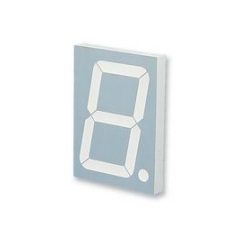What is the capacity of the latest capacitor? What are the purchasing models of equipment components?
What is the Capacity of the Latest Capacitor? What are the Purchasing Models of Equipment Components?
I. Introduction
Capacitors are fundamental components in the world of electronics, playing a crucial role in the functioning of various devices. They store and release electrical energy, making them essential for applications ranging from power supply smoothing to signal coupling. As technology advances, the demand for capacitors with higher capacities and improved performance continues to grow. This article will explore the latest advancements in capacitor capacities, particularly focusing on high-capacity options like supercapacitors, and will also delve into the various purchasing models for equipment components.
II. Understanding Capacitor Capacity
A. Definition of Capacitor Capacity
Capacitance is the ability of a capacitor to store an electrical charge. It is defined as the ratio of the electric charge stored on one plate of the capacitor to the voltage across the plates. The unit of capacitance is the Farad (F), with smaller values often expressed in microfarads (µF) or picofarads (pF).
B. Types of Capacitors
There are several types of capacitors, each with unique characteristics and applications:
1. **Ceramic Capacitors**: Known for their stability and reliability, ceramic capacitors are widely used in high-frequency applications.
2. **Electrolytic Capacitors**: These capacitors offer high capacitance values and are commonly used in power supply circuits.
3. **Tantalum Capacitors**: Tantalum capacitors are known for their small size and high capacitance, making them suitable for compact electronic devices.
4. **Film Capacitors**: These capacitors are known for their low loss and high stability, making them ideal for audio and high-frequency applications.
C. Latest Advancements in Capacitor Technology
Recent advancements in capacitor technology have led to the development of high-capacity capacitors and supercapacitors. Supercapacitors, also known as ultracapacitors, can store significantly more energy than traditional capacitors, making them ideal for applications requiring rapid charge and discharge cycles. The comparison between traditional capacitors and modern capacitors highlights the evolution of materials and design, leading to improved performance and efficiency.
III. Current Capacitor Capacities
A. Overview of the Latest Capacitor Capacities Available in the Market
The market has seen a surge in high-capacity options, particularly in the realm of supercapacitors. These components can achieve capacitance values in the range of farads, with some models exceeding 1000 F. Innovations in miniaturization and efficiency have allowed manufacturers to produce capacitors that are not only powerful but also compact, making them suitable for a wide range of applications.
B. Applications of High-Capacity Capacitors
High-capacity capacitors have found applications in various fields:
1. **Renewable Energy Systems**: Supercapacitors are increasingly used in solar and wind energy systems to store energy and provide backup power.
2. **Electric Vehicles**: In electric vehicles, high-capacity capacitors are used to manage energy flow, providing quick bursts of power for acceleration and regenerative braking.
3. **Consumer Electronics**: Devices such as smartphones and laptops utilize high-capacity capacitors to enhance performance and extend battery life.
C. Future Trends in Capacitor Capacity Development
The future of capacitor technology looks promising, with ongoing research and development efforts aimed at discovering new materials and designs. Potential breakthroughs could lead to capacitors with even higher capacities and improved energy density, further expanding their applications in various industries.
IV. Purchasing Models of Equipment Components
A. Overview of Purchasing Models
When it comes to acquiring capacitors and other equipment components, several purchasing models are available:
1. **Direct Purchasing**: This model involves buying components directly from manufacturers, often resulting in lower costs but requiring more effort in terms of sourcing and logistics.
2. **Distributors and Wholesalers**: Many businesses opt to purchase through distributors or wholesalers, who can provide a wide range of products and often have established relationships with manufacturers.
3. **Online Marketplaces**: The rise of e-commerce has made it easier for consumers and businesses to purchase components online, offering convenience and often competitive pricing.
B. Factors Influencing Purchasing Decisions
Several factors influence the decision-making process when purchasing capacitors:
1. **Cost Considerations**: Price is often a primary concern, and buyers must balance cost with quality and performance.
2. **Quality and Reliability**: The reliability of capacitors is critical, especially in applications where failure can lead to significant issues.
3. **Supplier Reputation and Support**: Choosing a reputable supplier can provide peace of mind, as established companies often offer better support and warranty options.
C. Evaluating Suppliers and Components
When evaluating suppliers and components, several criteria should be considered:
1. **Importance of Certifications and Standards**: Ensuring that components meet industry standards and certifications is crucial for quality assurance.
2. **Assessing Product Specifications and Performance**: Buyers should carefully review product specifications to ensure they meet the requirements of their specific applications.
3. **Customer Reviews and Case Studies**: Researching customer feedback and case studies can provide valuable insights into the performance and reliability of components.
V. Conclusion
Understanding capacitor capacities is essential for anyone involved in electronics, whether for design, manufacturing, or purchasing. The advancements in capacitor technology, particularly in high-capacity options like supercapacitors, are transforming the landscape of electronic devices. Additionally, being aware of the various purchasing models and factors influencing purchasing decisions can help businesses make informed choices when acquiring equipment components. As technology continues to evolve, capacitors will play an increasingly vital role in shaping the future of electronic devices and systems.
VI. References
1. "Capacitors: Basics and Applications." Electronics Tutorials.
2. "The Future of Capacitors: Trends and Innovations." Journal of Electrical Engineering.
3. "Supercapacitors: A Comprehensive Overview." Energy Storage Journal.
4. "Purchasing Components: A Guide for Engineers." Electronic Design Magazine.
5. "Understanding Capacitor Ratings and Specifications." IEEE Transactions on Components, Packaging and Manufacturing Technology.
This blog post provides a comprehensive overview of the latest capacitor capacities and the purchasing models for equipment components, ensuring readers are well-informed about these critical aspects of electronics.







